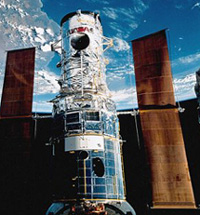The Hubble telescope being repaired.
Click on image for full size
NASA
NASA to Replace Hubble Telescope Instrument - Just BeCOS...
News story originally written on August 18, 1997
Well not exactly just because. Edward Weiler, HST program scientist, said that NASA has chosen to include the COS instrument aboard the Hubble Space Telescope because "it will allow astronomers to study the very early Universe and the creation of the heavy elements during the first period of
star formation billions of years ago." COS stands for Cosmic Origins Spectrograph.
The instrument is scheduled to be installed late in 2002 during Hubble's fourth servicing mission. The COS is expected to be a premiere HST instrument into the first decade of the next century. The estimated cost of this state-of-the-art spectrograph is $25 million. NASA is working on a contract for the new instrument with Dr. James Green of the University of Colorado, Boulder.
The Hubble Space Telescope, a 2.4 meter reflecting telescope, continues to make astronomical observations while in low-Earth orbit.
You might also be interested in:
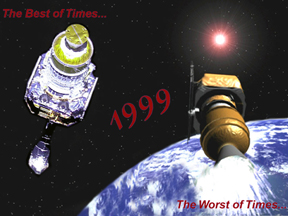
It was another exciting and frustrating year for the space science program. It seemed that every step forward led to one backwards. Either way, NASA led the way to a great century of discovery. Unfortunately,
...more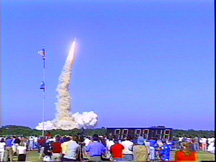
The Space Shuttle Discovery lifted off from Kennedy Space Center at 2:19 p.m. EST, October 29th. The sky was clear and the weather was great as Discovery took 8 1/2 minutes to reach orbit for the Unitied
...more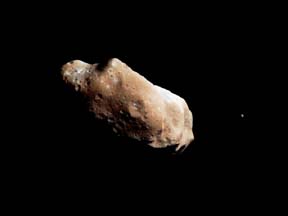
A moon was discovered orbiting the asteroid, Eugenia. This is only the second time in history that a satellite has been seen circling an asteroid. A special mirror allowed scientists to find the moon
...more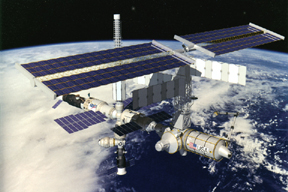
Will Russia ever put the service module for the International Space Station in space? NASA officials are demanding an answer from the Russian government. The necessary service module is currently waiting
...more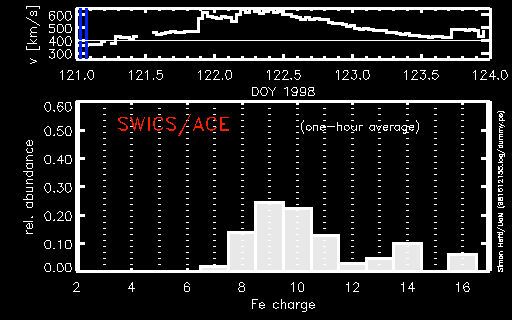
During a period of about two days in early May, 1998, the ACE spacecraft was immersed in plasma associated with a coronal mass ejection (CME). The SWICS instrument on ACE, which determines unambiguously
...more
J.S. Maini of the Canadian Forest Service has referred to forests as the "heart and lungs of the world." Forests reduce soil erosion, maintain water quality, contribute to atmospheric humidity and cloud
...more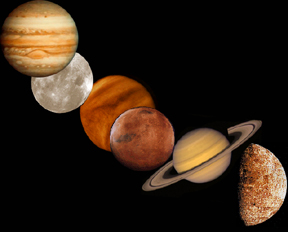
In late April through mid-May 2002, all five naked-eye planets are visible simultaneously in the night sky! This is includes Mercury which is generally very hard to see because of its proximity to the
...more


